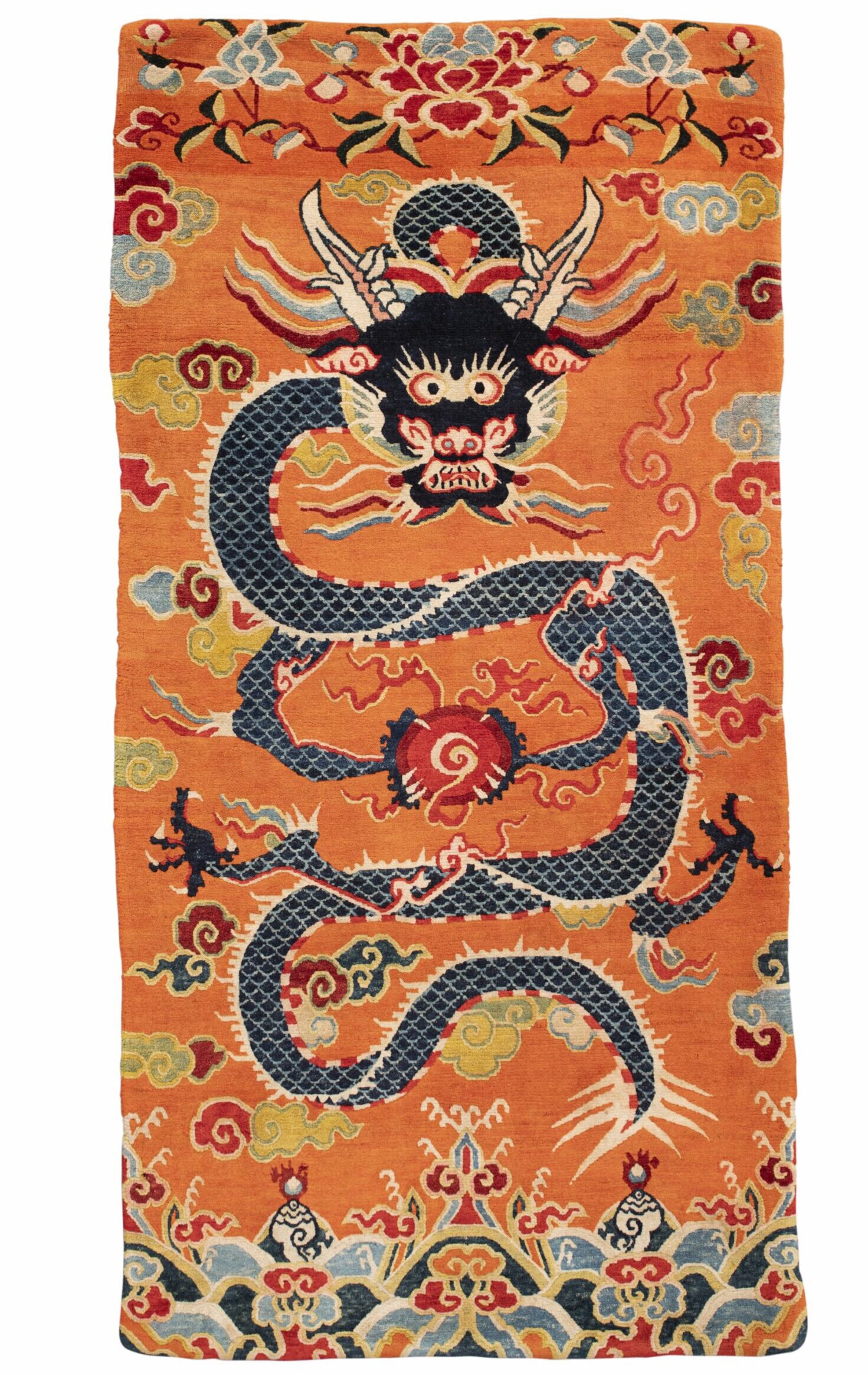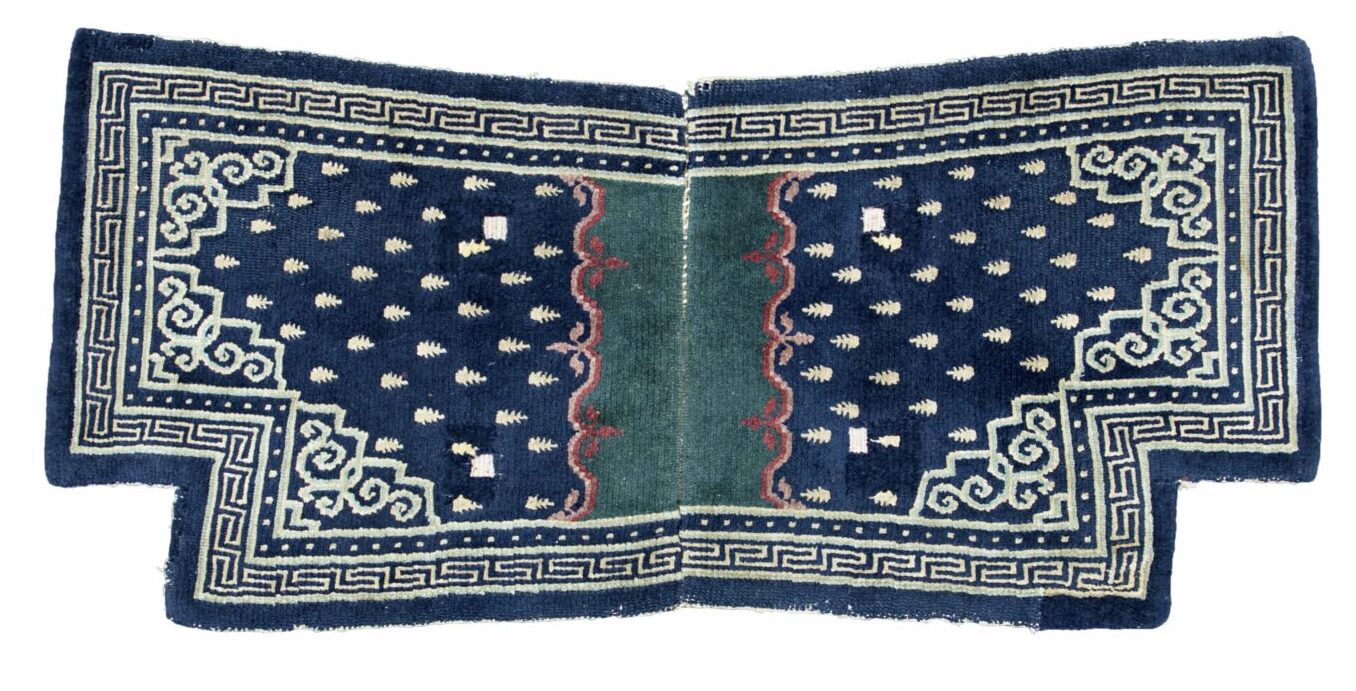Tibetan Weaving – The Carpet Museum at Voigtsberg Castle
The current exhibition at The Carpet Museum at Voigtsberg Castle, Oelsnitz/Vogtland, Germany, provides an overview of Tibetan weaving from the 15th century to modern-day, in a huge departure from the usual displays of ‘Axminster’-type weavings and Tefzet carpets made in the local region of Vogtland, which was once the centre of German carpet production.
‘Drumze: Tibetische Teppiche’ is curated by Berlin gallerist Thomas Wild and Tibetologist Franz Xaver Erhard, provides an overview of Tibetan weaving from the 15th century until today. It is likely that carpets have long played a crucial role in the lives of farmers, herders and monks living in the Tibetan highlands.
The exhibition is accompanied by the catalogue Drumze: Metamorphoses of the Tibetan Carpet, with English and German text by Franz Xaver Erhard and Thomas Wild, (Edition-Tethys, Potsdam, 2021).
The dragon carpet carries an example of classic Chinese imperial iconography and demonstrates how synthetic colours and new aesthetic influences were adopted by the Tibetan elite in Lhasa in the early 20th century.
The Tibetan carpet tradition is one of the few non-Islamic hand-knotted weaving practices to endure over the centuries, but it has in no way remained static. While ‘the roof of the world’ may seem like a remote region, the exhibition makes connections with the weavings that emerged along the Silk Road, and demonstrates how Tibetan weaving today has resulted in some of the most desirable luxury furnishings across the world.
This remarkable metamorphosis is demonstrated through a total of forty-one carpets. Although there are rare and exceptional pieces on display, the focus is on ‘the typical carpet’, whether typical of a specific Tibetan region, type or trend. We therefore journey from the early signs of commercial carpet production in the Wangden Valley and classical bordermedallion designs via the introduction of commercial dyes to designer carpets, with every contemporary design imaginable. The latter are often woven in Nepal or India, where tens of thousands of Tibetans fled following the political turmoil of the 1950s, taking their skill in carpet weaving with them.
Full exhibition details in latest edition, HALI 209.



























Comments [0] Sign in to comment